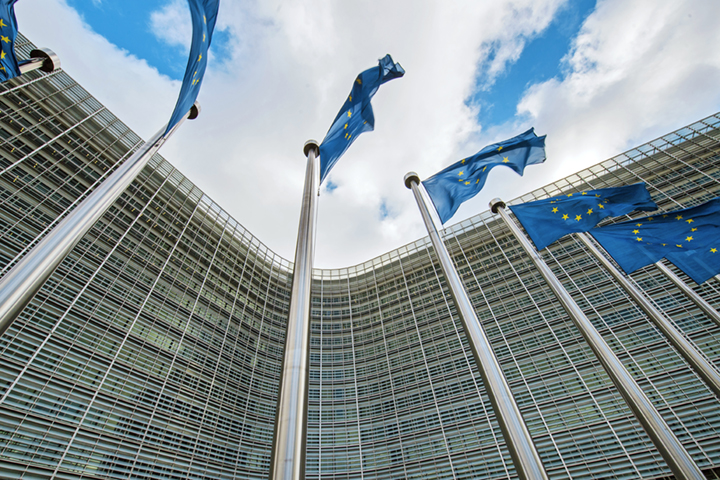The Clean Energy Package has effectively filled the desks and calendars of EU energy policy experts for the past two years. This massive package of eight laws affects the energy industry as well as companies and consumers.
Many have criticised the package as being too wide-ranging to handle all at once. However, Fingrid’s Electricity Market Specialist Ali Haider notes that all the issues in the package are interlocking in some way. Dealing with the proposals together ensures that there are no contradictions or loopholes in the laws.
“The process would have taken longer if every regulation and directive had been handled separately, and I don’t know whether the end result would have been any better,” says Haider.
He mentions that certain issues requiring legislative action are still missing from the package. For example, the cooperation between power exchanges in delivering the European Market Coupling Operator (MCO) function needs further clarification and development, but the EU Commission decided to leave that out of the package.
The largest points of contention are still open
Processing of the Clean Energy Package is nearing completion at the EU level. During the summer, agreement was reached on matters that are crucial to meeting the 2030 emission reduction targets, including renewable energy, changes in two energy efficiency directives, and the Governance regulation. By 2030, the amount of renewable energy has to be increased by 32% in comparison to the level in 2020. In terms of energy efficiency, a joint non-binding target of 32.5% will be set for the member states, and every EU country must also increase the efficiency of energy use by 0.8% per year during the 2021–2030 period.
The focus this autumn has been on renewing the European electricity market model. The Clean Energy Package includes four legislative proposals that update the Electricity Market Directive and Regulation, the Security of Supply Regulation and the Agency for the Cooperation of Energy Regulators (ACER) Regulation. The targets for these changes sound very familiar to Finns. The EU Commission wants to give customers more choices and increase competition on the market. The new market model is also intended to improve security of supply for electricity and integrate renewable energy into the system. But in political terms, the second part of this package has proven difficult. All the biggest points of contention are still open.
The EU Commission wants more power
The fate of capacity markets is the most problematic issue. Nearly 30 capacity mechanisms are in use or being planned in 11 EU countries. The boundary conditions for these are now changing. Negotiations have to find a compromise between safeguarding electricity production and meeting climate commitments.
The EU Commission has a somewhat negative attitude towards capacity mechanisms. The commission considers them to be state subsidies that can distort competition, prevent realisation of electricity markets, and lead to overcharging of customers. One of the biggest disputes involves who can decide about setting up a capacity mechanism. Many member states want to retain the decision-making power, but this doesn’t suit the European Commission or the European Parliament. Finland considers it important to first investigate the possibility of less intrusive strategic reserves.
Also, the emission limits set for strategic reserves are problematic for many Member States, including Finland. The limits proposed by the European Parliament are so strict that domestic power plants can’t fit under them. However, Austria – which holds the EU Presidency and is leading the negotiations – is positive that a workable compromise solution can eventually be found.
Another big question only came up during the last stage of negotiations. The EU Commission wants to expand its authority concerning cross-border interconnectors. According to the proposal, every cross-border interconnector to a non-EU country must be dealt with on a case-specific basis and its risks to the internal market determined. In practice, this means that the EU Commission would be negotiating cross-border interconnector agreements on behalf of the member state. Finland cannot accept this. On the other hand, Finland welcomes the new regulation related to the electricity sector’s risk preparedness. According to the Finnish officials, as cooperation increases, it’s important to have more knowledge about what’s happening in neighbouring countries. The proposal also improves Nordic electricity market activities.
Concern about the future of disturbance reserves
For Fingrid, one proposal is more worrisome than any other.
“According to the EU Commission’s proposal, transmission system operators could not own reserve power plants, and they should purchase these services from the market,” states Haider.
The law obliges Fingrid to ensure the power system balance at all times. The need for preparedness will only grow in the future when Olkiluoto 3 is commissioned. Finland imports about one-fifth of its electricity. During significant disturbances, we can’t be certain about the availability of sufficient cross-border capacity and the resulting supply of Nordic electricity. This is why Fingrid owns 935 MWh of disturbance reserves. Fingrid’s electricity market specialist emphasises that disturbance reserves are the very last resort in terms of balancing the power system. Before that, all of the electricity available on the reserves market is used. Reserve power plants do not participate in the electricity markets.
“Disturbance reserves are a small but a key part of domestic electricity system security,” summarises Haider.
Approval of the Commission’s proposal would put Fingrid in a difficult position. It would have to sell its plants and then purchase the production from the same plants as a service – and at a higher price. Estonia is the only other country that shares Finland’s situation. At the moment there is an entry in the text that would allow Finland to continue its practice. But nothing is certain until the entire package is complete.
“We’re hoping that the final text will include an entry that would allow Fingrid to own the plants at least until the end of their service life,” states Haider.
Another change brought about by the Clean Energy Package applies to transmission system operators’ regional coordination centres. Certain tasks will be transferred from Fingrid to regional actors. The regulation and directive are also likely to result in some new grid regulation in the form of detailed network codes.
Will the package be ready by Christmas?
No major changes are expected on the consumer side. Datahubs, the right of consumers to use their own energy, and price-based demand response are already common practice in the Nordic electricity market. The package also takes the electricity market closer to the time of use and tries to bring more flexibility and efficiency to the functioning of the market.
“As a whole, the package is moving the European electricity market in the right direction,” outlines Haider.
He is pleased that the EU Commission listened to how things have been handled in different countries around Europe. Fingrid was an active participant in providing input to the development of the package via the Ministry of Economic Affairs and Employment and the European Network of Transmission System Operators for Electricity (ENTSO-E). Finnish officials hope that the final compromise will include more market orientation. Despite the disputes, Austria is confident that agreement will be reached between the European Parliament, member states and the Commission by the end of this year. If this happens, the European energy market will be in good shape – at least for a while.







